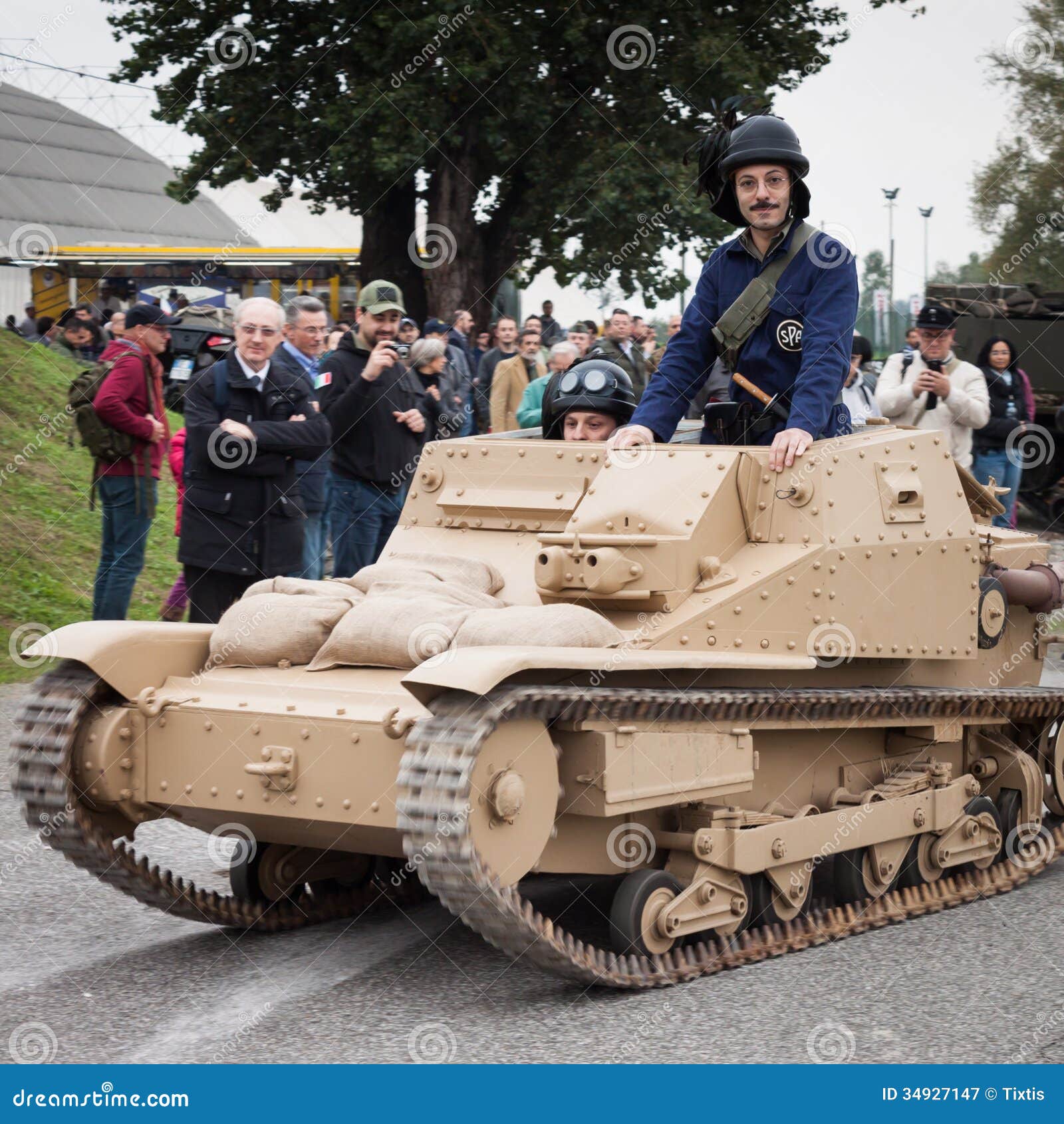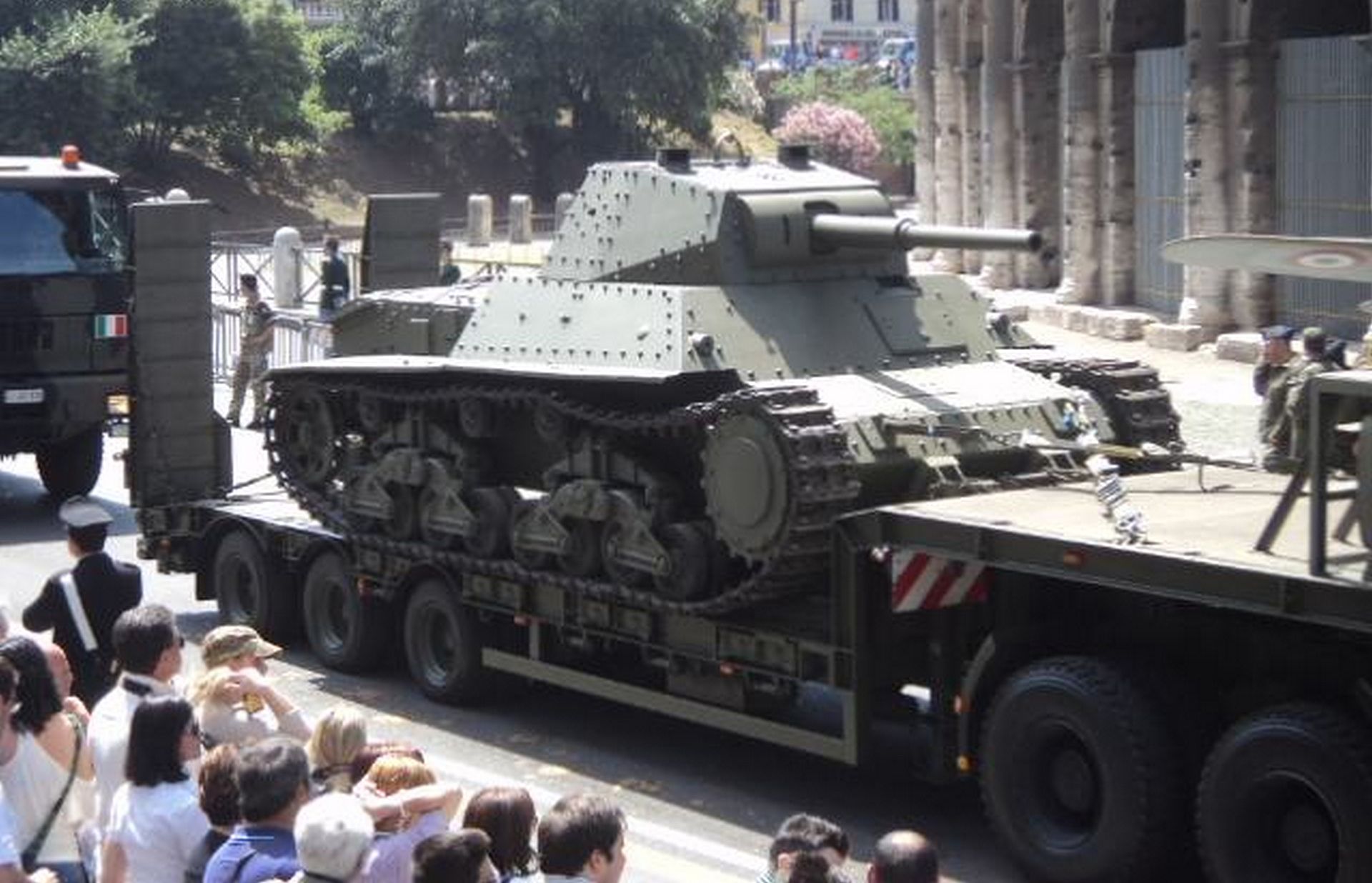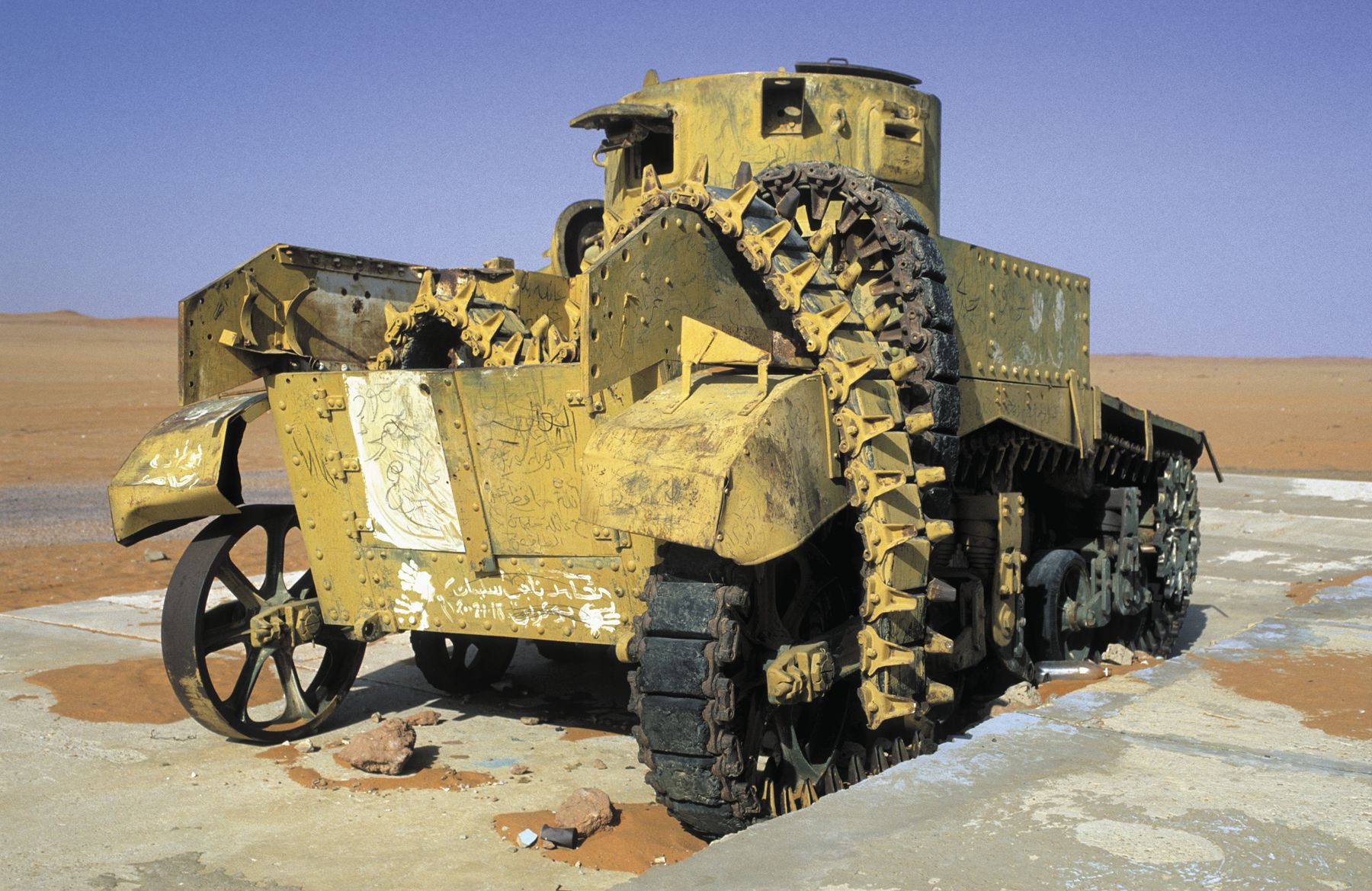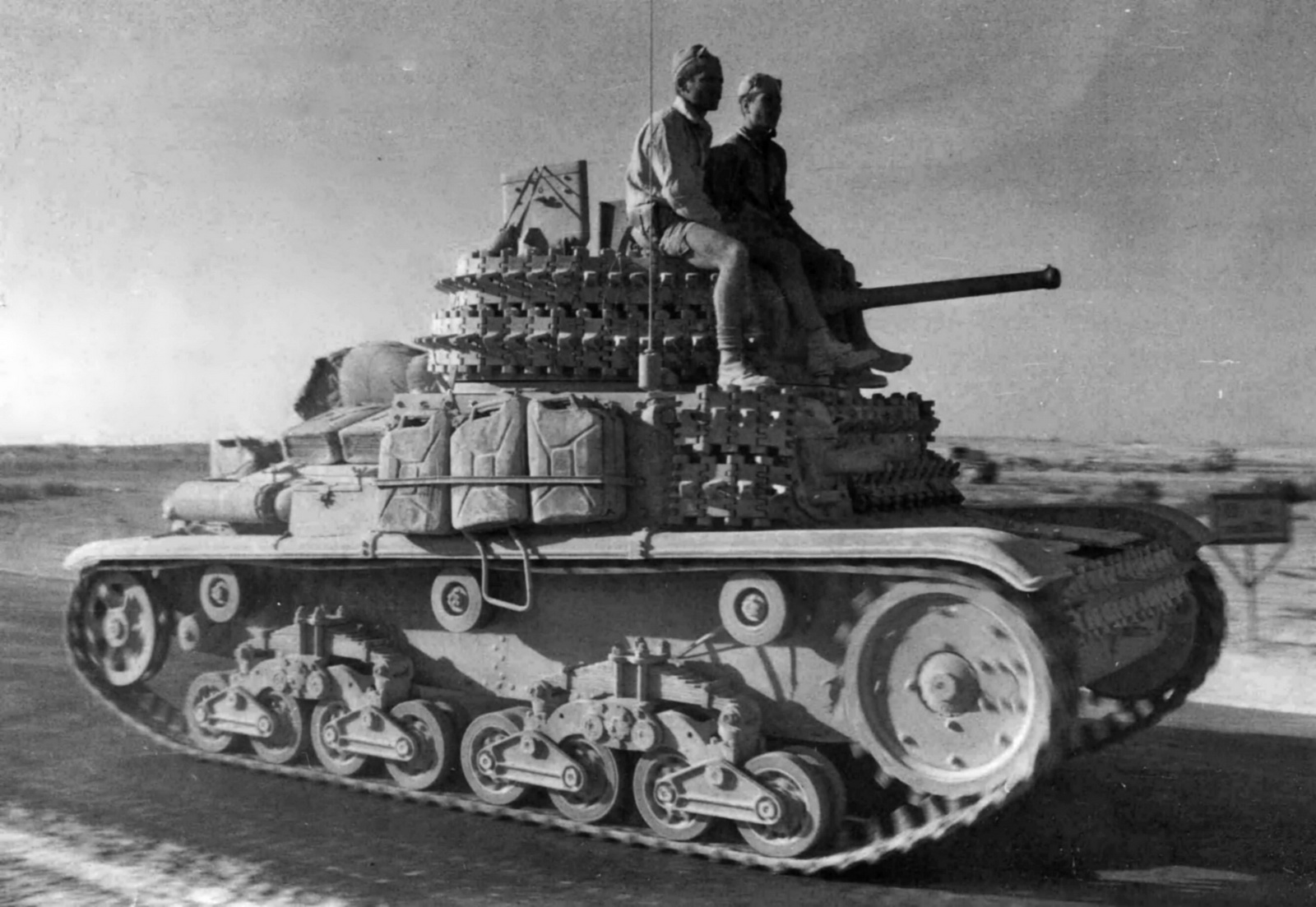
WW II Italian Tank at Militalia 2013 in Milan, Italy Editorial Photography Image of fair
Italian Tanks of World War II. During the Second World War (WWII) the armed forces of Italy produced a moderate number of battle tank and assault gun designs. Links to detailed techinical specifications for a selection of AFVs or armored (armoured) fighting vehicles developed by the Italian Army are listed. The availability of a four-view plan.

An Italian Carro Armato M13/40 Medium Tank of 132nd Armored Division Ariete during the battle of
Browse 243 ww2 italian tanks photos and images available, or start a new search to explore more photos and images. 5 NEXT Browse Getty Images' premium collection of high-quality, authentic Ww2 Italian Tanks stock photos, royalty-free images, and pictures.

WW II Italian Tank at Militalia 2013 in Milan, Italy Editorial Photography Image of historic
The table below provides details on Italian WWII armored vehicle production numbers between 1940 and 1945. The table shows model numbers, years produced and total. Italian armor production in WWII infographic. Italian Armored Vehicle Production Chart Share Your Thoughts Related Images: (Visited 526 times, 1 visits today) 0 Barbarigo

The P40 Italy's Killer World War II Tank You May Have Never Heard Of The National Interest
Kingdom of Italy (WW2) - Tank Encyclopedia Kingdom of Italy (WW2) Tanks Carro Armato Leggero L6/40 Carro Armato M11/39 Carro Armato M15/42 FIAT 3000 Fast Tanks Carro Veloce 29 FIAT-Ansaldo CV35 L.f. 'Lanzallamas compacto' Self-Propelled Guns Semovente L40 da 47/32 Semovente M40 da 75/18 Semovente M41 and M42 da 75/18 Semovente M41M da 90/53

WWII Tanks Italy's Failed Iterations Warfare History Network
On September 8, 1943, Italy announced an armistice with the Allies. Unfortunately, the Nazis were prepared and moved rapidly to seize control of the northern two-thirds of Italy. As a result.

Italian M13/40 medium tanks, North Africa WWII pin by Paolo Marzioli Italian army, Italian
Italian artillery was usually designated using the calibre and length of the barrel in number of calibre lengths, so "90/53" would mean a weapon with a 90 mm diameter barrel where the length of the barrel was approximately 53 calibre lengths (i.e. 53x90 mm, that is 4.77 m). See also: 203 mm /53 Italian naval gun - main gun on Italian cruisers

World War II Pictures In Details M13/40 of Italian XX Armored Corps in North Africa
Then there were Italy's tanks. Today we will look at Italy's primary tank of WWII, the M13/40. Carro Armato M13/40 Early History and Specifications The Carro Armato M13/40 was first.
_3.jpg?itok=N2zxh7Re)
Dead Why No One Wanted to Use Italy's Horrible World War II Tanks The National Interest
Tanks were an important weapons system in World War II. Even though tanks in the inter-war years were the subject of widespread research, production was limited to relatively small numbers in a few countries. However, during World War II, most armies employed tanks, and production levels reached thousands each month.
_0.jpg?itok=WCJt1f53)
Meet the Carro Armato P26/40 One Tough Italian Tank of World War II The National Interest
Meet the Carro Armato P26/40: One Tough Italian Tank of World War II. As an Italian medium tank, it was an oddity and too few in number, but still a threat to Allied counterparts on a tank-per.

Italian Army, L335 light tank of World War II Stock Photo Alamy
Largely overshadowed by their allies and global rivals, the Italians managed to field some viable tank designs during World War 2. There are a total of [ 16 ] WW2 Italian Tanks entries in the Military Factory. Entries are listed below in alphanumeric order (1-to-Z). Flag images indicative of country of origin and not necessarily primary operator.

Preserved Carro Armato L6/40 Italian WW2 light tank in Italy
Tanks of World War II provides students of military history with an extensive database of tracked armored vehicles developed for the armed forces of the WWII era. The armored vehicle listings are primarily organized by country of origin.. Italy. Armored vehicles produced for the Italian armed forces up to 1943 and, later, for the Third Reich.

An Italian M13/40 tank in Tobruk, 1942. Photo colorized by Irootoko Jr [1598 x 976] r/wwiipics
Throughout the 1940s, Italy's WWII tanks became bigger and better, but never spectacular. This article appears in: August 2018 By Arnold Blumberg Although it suffered, like all combatants, from the costly stalemate and horrendous casualties of trench warfare during World War I, Italy never used tanks during that conflict.

World War IIMedium tank type M 11/39 Italian in service on the eve... Fotografía de noticias
The Carro Armato P26/40, the last WWII evolution of Italian tanks, was a good design armed with a high-velocity 75 mm (2.95 in). However, it came too late. A Semovente 75/34 captured by British troops in 1944. WW2 Tanks. WW2 tanks posters All Tiger tanks liveries. Panther liveries and variants

"Semovente M 40 DA 75/18, Ariete Division, Western Desert, January 1942", Richard Chasemore
Kingdom of Italy (1941-1943) Light Reconnaissance Tank - 432 Built The Carro Armato Leggero L6/40 was a light reconnaissance tank used by the Italian Regio Esercito (English: Royal Army) from May 1941 until the Armistice with the Allied forces in September 1943. It was the only turret-equipped light tank of the Italian Army and was.

Italian tank crew of the Ariete battalion, 1940 [1600x1044] /u/brurino ImagesOfHistory
The Germans and Italians succeeded in evacuating over 60,000 of their troops, as well as much of their equipment, to mainland Italy. Their losses, which eventually amounted to 156,000 men, were inflicted mainly on Italian units. View this object. British soldiers explore a damaged Tiger, Belpasso, Sicily 1943.

Italian Army, FiatAnsaldo M13/40 tank of World War II Stock Photo Alamy
May 11-12 Allied armies, heavily reinforced, launch a huge new offensive against the Gustav Line—Operation Diadem. The French Expeditionary Force, part of General Mark Clark's Fifth Army, plays a key role. Moroccan soldier, part of Free French forces, guards a German prisoner of war in the Castelforte area, May 15, 1944.